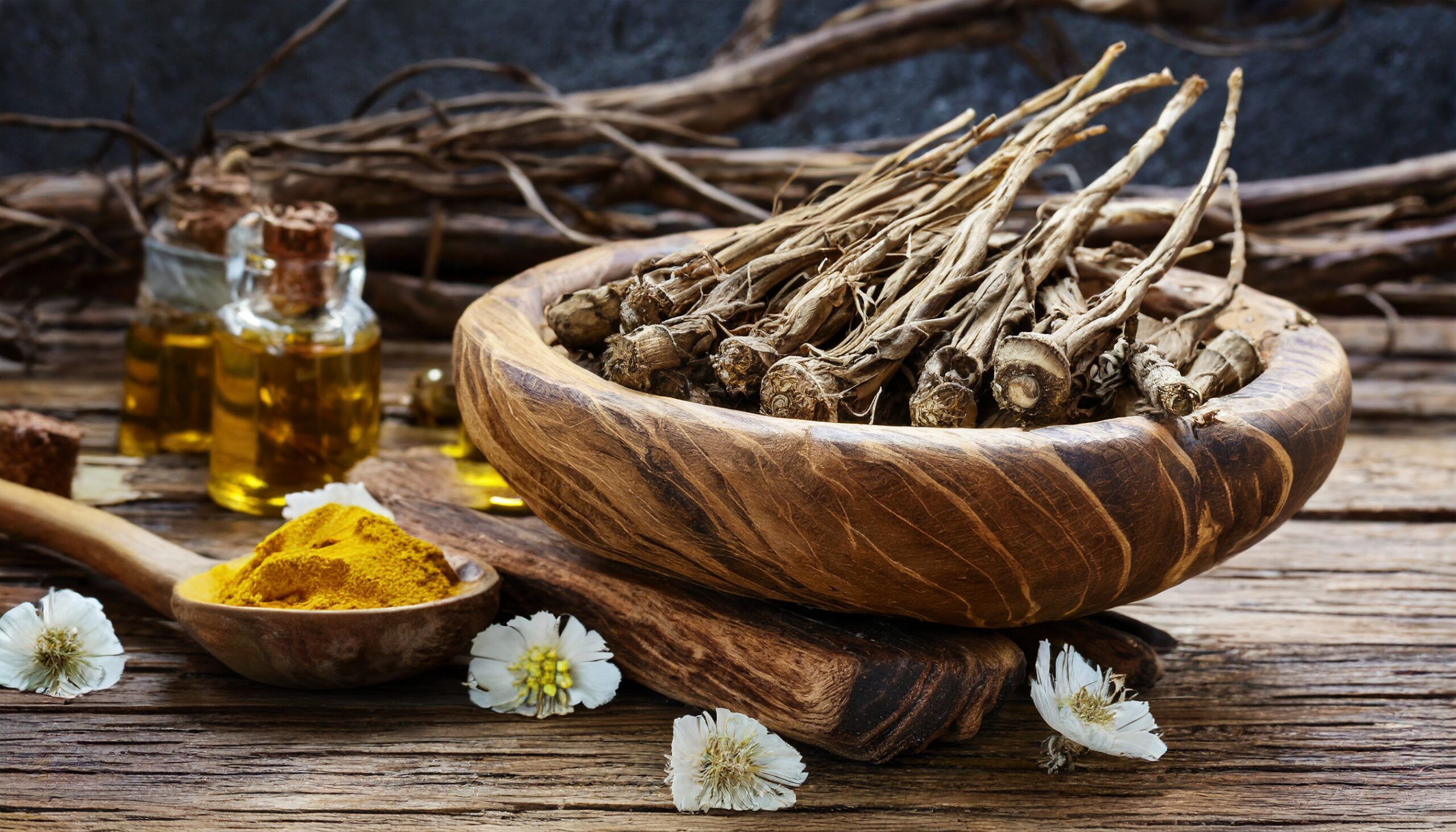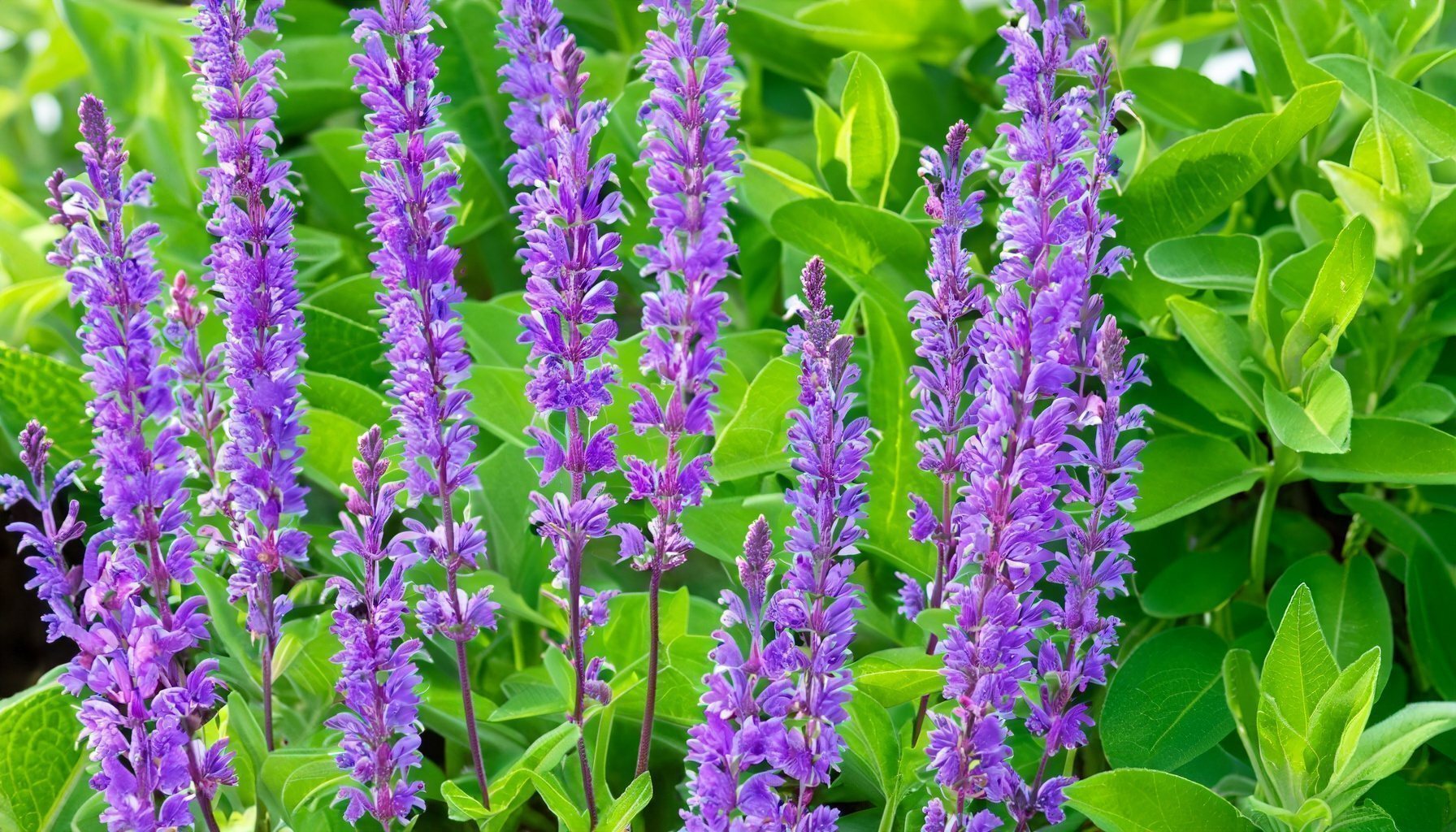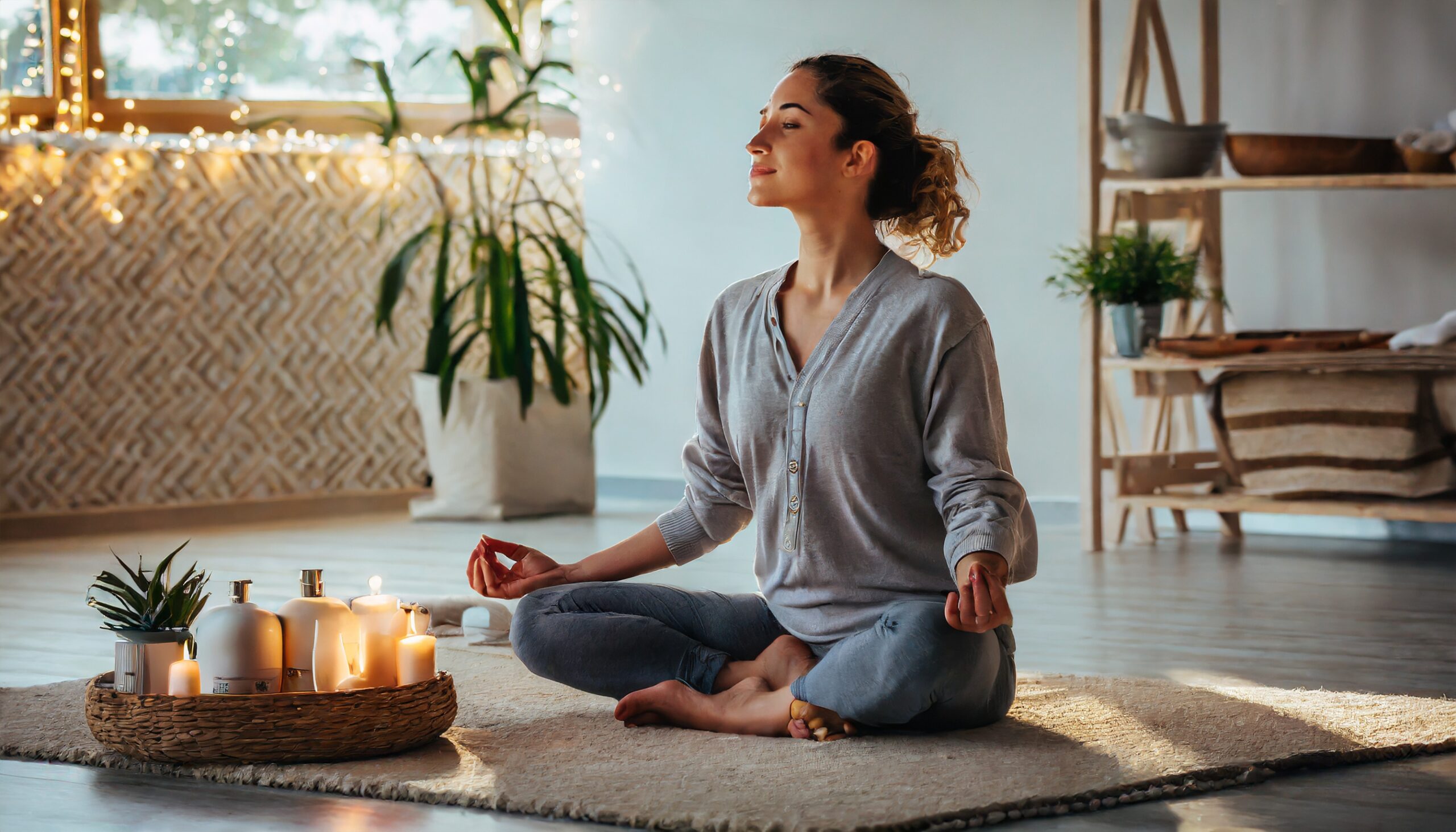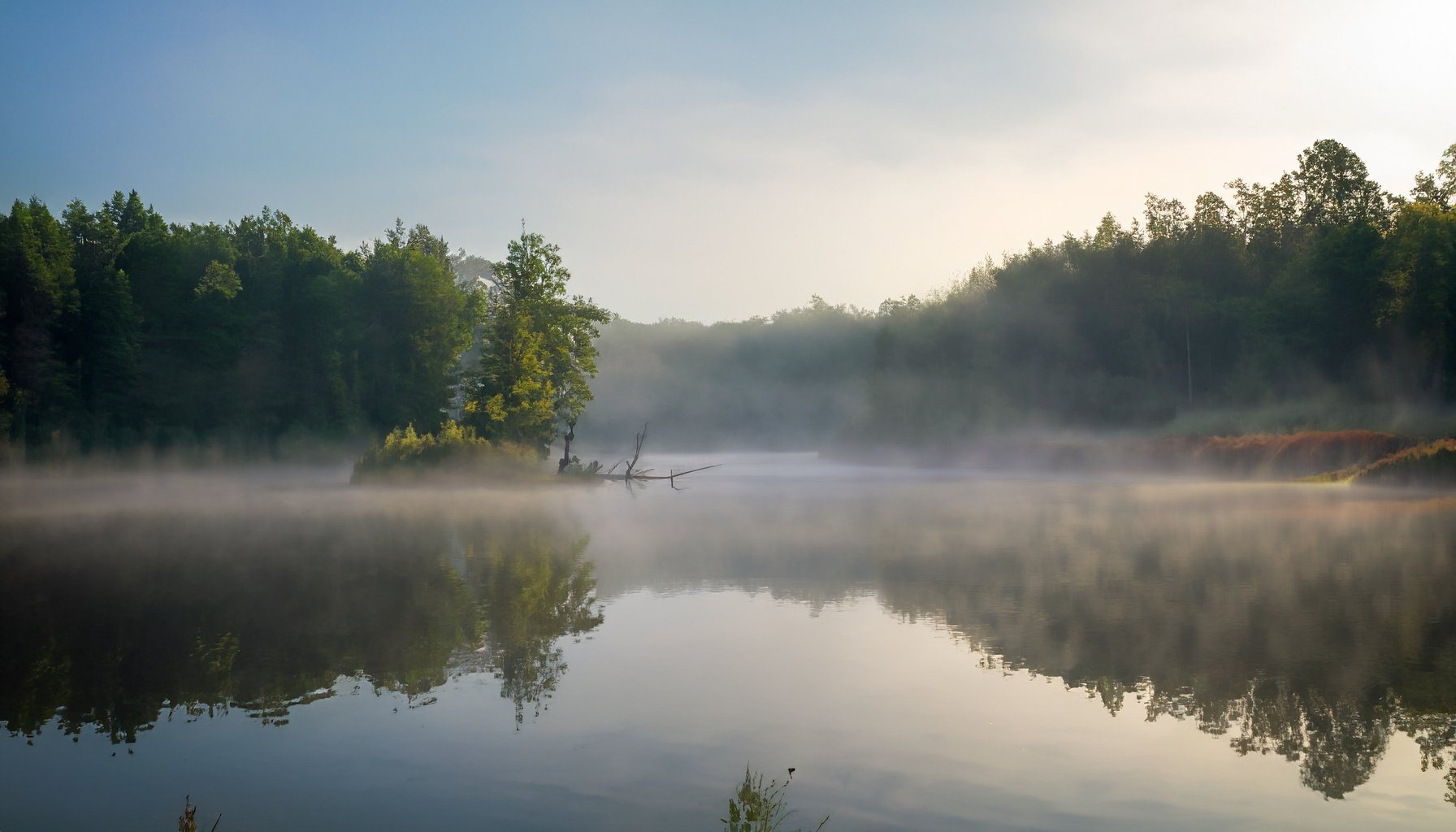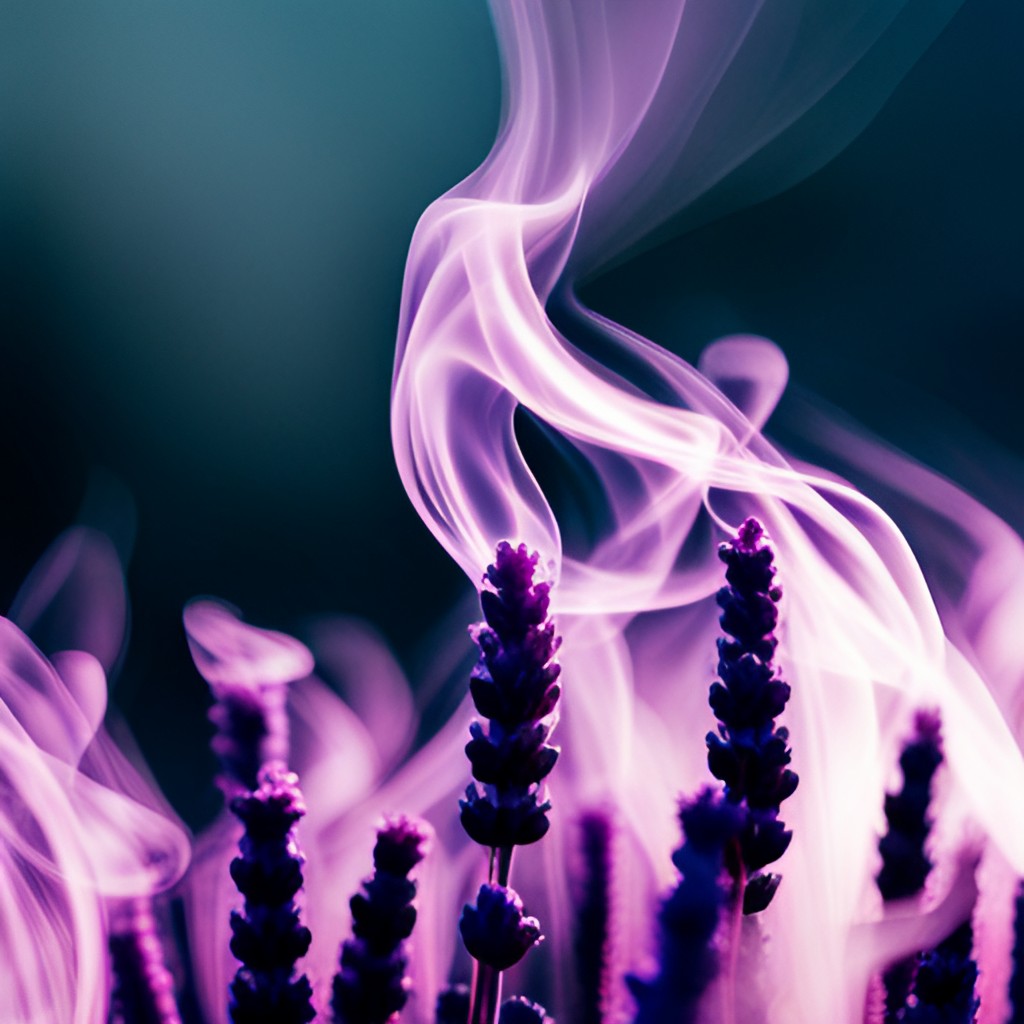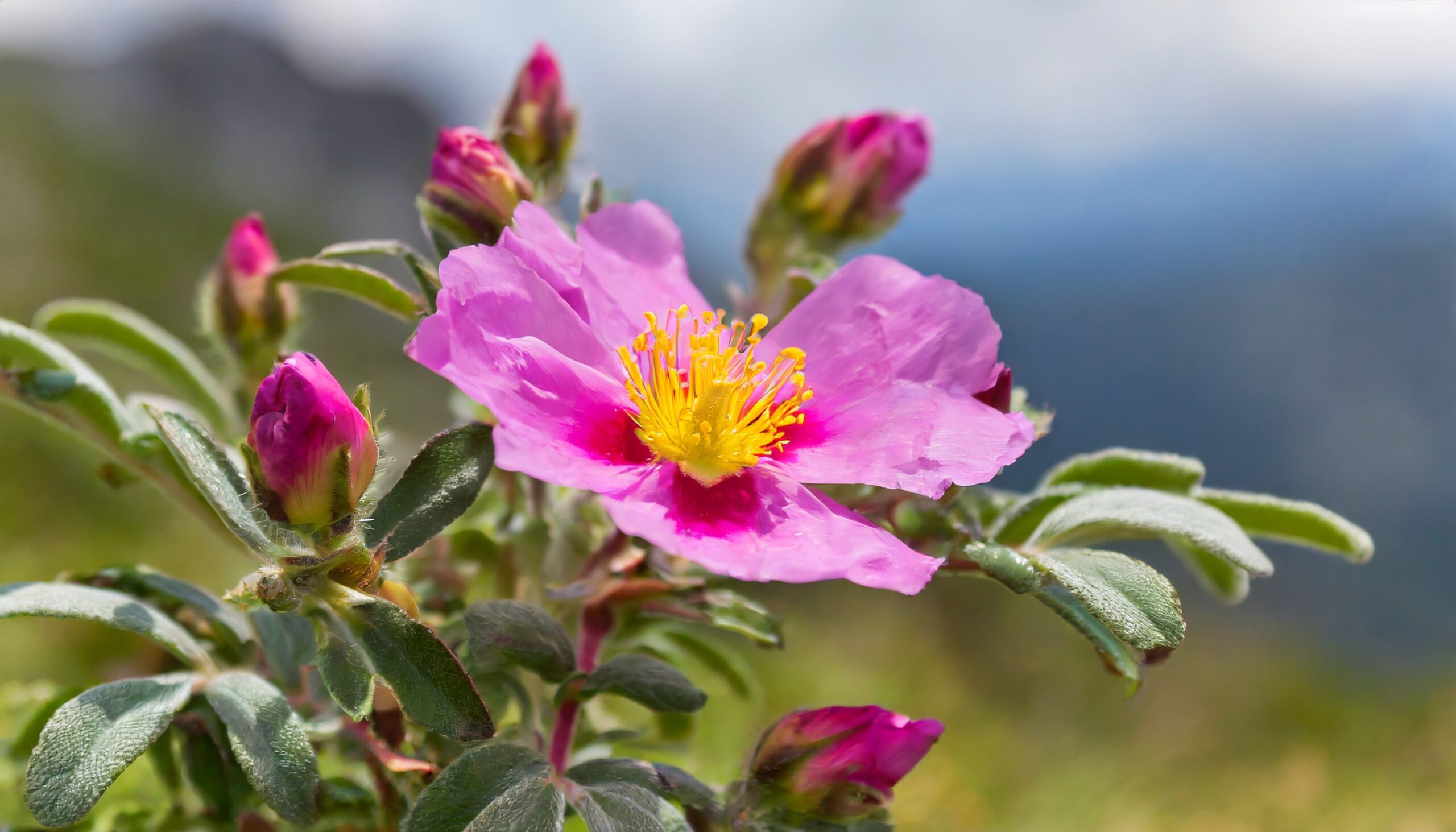
The natural resin and essential oil of Cistus (Rockrose) are treasured in aromatherapy and perfumery, offering a unique blend of sweet, warm, and woody fragrances that have been cherished since ancient times.
Cistus, commonly known as rockrose, is a genus of flowering plants in the family Cistaceae. Rockroses are well-known for their beautiful, showy flowers and their ability to thrive in poor, rocky soils where many other plants struggle to survive. Beyond their aesthetic appeal, rockroses are highly valued for their aromatic qualities. Here is an overview of Cistus as a natural aromatic:
1. Botanical Characteristics:
- Flowers: Blooms are typically bright and showy, ranging in color from white to various shades of pink. They are often seen covering the plant in the spring and summer.
- Leaves: The foliage is typically dark green, sticky, and fragrant. The leaves often exude a resinous aroma that is intensified by the warmth of the sun.
- Habitat: Cistus plants are native to the Mediterranean region and are well-adapted to hot, dry, and sunny climates.
2. Aromatic Qualities:
- Resin: The plants produce a sticky resin called labdanum, which has been used since ancient times as a perfume ingredient, incense, and medicine. It exudes a warm, sweet, and woody aroma with balsamic undertones.
- Essential Oil: The essential oil extracted from Cistus is cherished in aromatherapy and perfumery for its complex, multifaceted aroma. It is believed to have calming and uplifting effects on the emotions.
- Harvesting: The resin can be collected from the leaves, stems, and flowers of the plant, while the essential oil is obtained through steam distillation of the plant’s parts.
3. Applications:
- Perfumery: Rockrose’s complex and exotic fragrance has made it a popular component in high-end perfumes, colognes, and aromatic products.
- Aromatherapy: The essential oil is used in aromatherapy to promote relaxation, alleviate stress, and enhance mental clarity.
- Skin Care: It is also an ingredient in skincare products due to its supposed skin-rejuvenating properties.
4. Historical Use:
- Ancient Civilizations: Labdanum has been valued since ancient Egyptian, Greek, and Roman times for its aromatic and medicinal properties. It was often used in incense and perfumes.
5. Considerations:
- Sustainability: Harvesting and production practices should be considered to ensure that they are sustainable and do not harm the natural ecosystems where rockrose grows.
- Allergies: As with any natural product, some individuals may be allergic to rockrose, so it’s essential to perform a patch test before extensive use.
Each species of Cistus offers a slightly different aromatic profile, providing a variety of options for those interested in exploring their natural aromatics.

